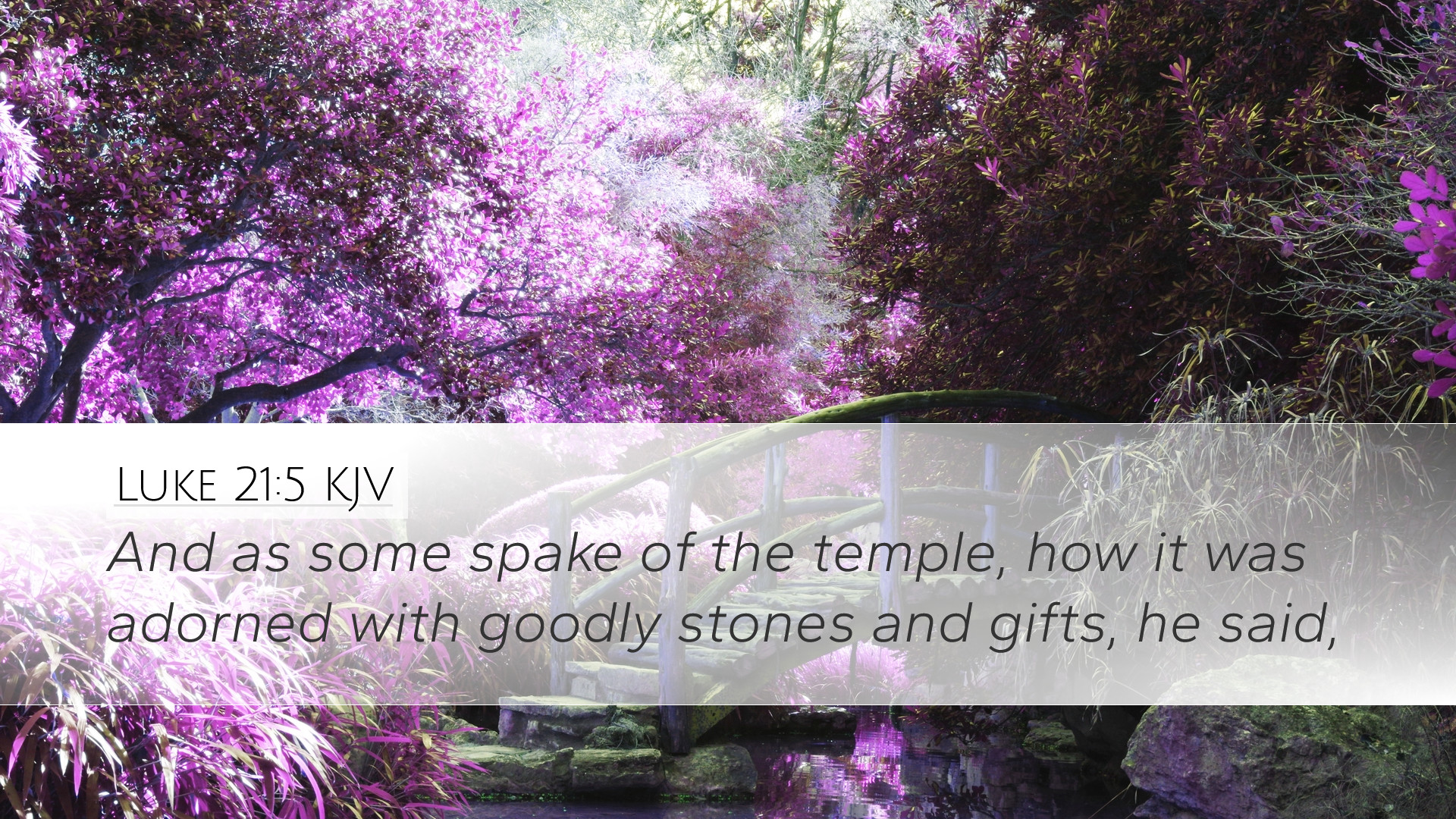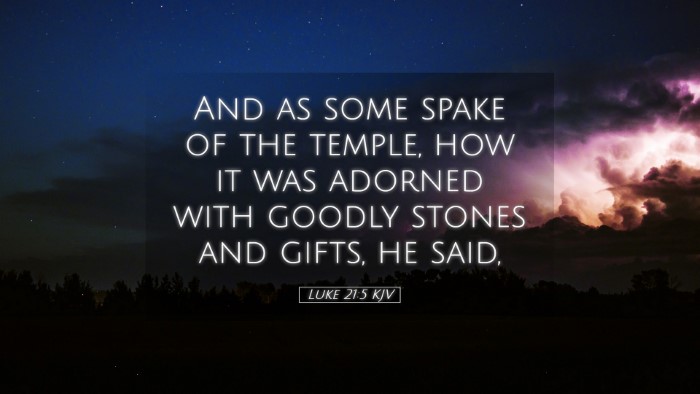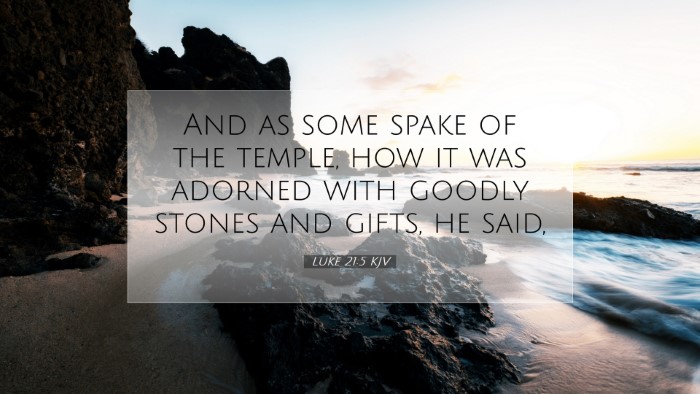Commentary on Luke 21:5
Textual Reference: "And some spake of the temple, how it was adorned with goodly stones and gifts."> Luke 21:5
Introduction
Luke 21:5 serves as a poignant reminder of the temporary nature of earthly structures and the dangers of placing our ultimate hope in physical representations of faith. In the context of Jesus’ ministry, this verse captures a moment of reflection on the grandeur of the temple, showing how it caught the attention of those who were witnesses to its impressive architecture.
The Externals of Faith
The reference to the temple's adornments, “goodly stones and gifts,” highlights how the faith of the people had become entwined with its physical structure. Here are important insights derived from public domain commentaries:
-
Matthew Henry:
Henry emphasizes that the disciples were admiring the temple’s beauty, which reflected their attachment to the outward forms of religion. This admiration illustrates a common human tendency to be distracted by physical beauty and grandeur instead of the spiritual realities they signify.
-
Albert Barnes:
Barnes elaborates that the mention of “goodly stones” could refer to both the magnificence of the temple’s construction and the costly donations that adorned it. It indicates how ancient religious edifices often become synonymous with the people’s faith, making the spiritual truths behind them secondary.
-
Adam Clarke:
Clarke points out the historical significance of the Jerusalem temple, representing the presence of God among His people. However, he warns that reverence for such places should not overshadow the necessity of reverence for God Himself, who transcends physical locations.
Warnings against Misplaced Affection
While the temple was indeed a magnificent structure, Jesus uses this moment to caution His followers against investing their affections and aspirations in what is temporal.
-
Matthew Henry:
In his commentary, Henry suggests that such attachments may lead to a misguided sense of security. He implies that the believers’ focus should be on the spiritual implications of their faith, which are not confined to man-made structures. Jesus’ foretelling of the temple’s destruction serves as a reminder of the impermanence of material gains.
-
Albert Barnes:
Barnes stresses that Jesus’ comments were prophetic, predicting the significant historical event of the temple’s destruction in 70 AD. He notes that this serves as an admonition not to exalt human achievements or institutions above the divine purpose.
-
Adam Clarke:
Clarke beautifully states that the beauty of the temple is nothing compared to the beauty of a life lived in obedience and faith. He reminds readers that God is more concerned with the heart than with physical buildings.
The Context of the Passage
Luke 21:5 is situated within a broader prophetic discourse concerning the end times. The attention given to the temple represents a significant theological theme about judgment and the re-establishment of true worship.
-
Matthew Henry:
Henry notes that as Jesus observed the activities around the temple, He made it clear that the true temple is not a building made with hands but rather the body of Christ and believers collectively as the dwelling place of God.
-
Albert Barnes:
Barnes adds that Jesus’ prophetic declaration aligns with His mission to redefine the parameters of worship, indicating that the destruction of the temple would signal a new era where worship would be in spirit and truth (John 4:24).
-
Adam Clarke:
Clarke expounds that an understanding of the temple’s anticipated destruction forces Christians to look beyond physical edifices to the eternal kingdom of God, emphasizing the call to focus on the eternal rather than the temporal.
Implications for Modern Believers
As contemporary readers of this passage, we are called to introspection regarding our own attachments to physical spaces and traditions of worship.
-
Matthew Henry:
Henry’s insights remind us that while church buildings can inspire reverence, they must not become idols in our hearts. The essence of our faith must always point back to Christ as the true foundation.
-
Albert Barnes:
Barnes highlights that this text can guide us in understanding the transient nature of earthly institutions as we prepare for the reality of an eternal existence with God, encouraging believers to invest in what is lasting.
-
Adam Clarke:
Clarke’s reflections suggest modern believers cultivate a spirituality that transcends physical structures, leading lives that reflect the worship of God not confined to a single place, but visible in their daily existence.
Conclusion
Luke 21:5 serves as an invitation to look beyond the visible and the tangible in our worship and faith practices. By combining the insights from public domain commentaries by Matthew Henry, Albert Barnes, and Adam Clarke, we are reminded that our esteem should lie not within the grandeur of earthly buildings but in the eternal truth of God’s presence among His people.


